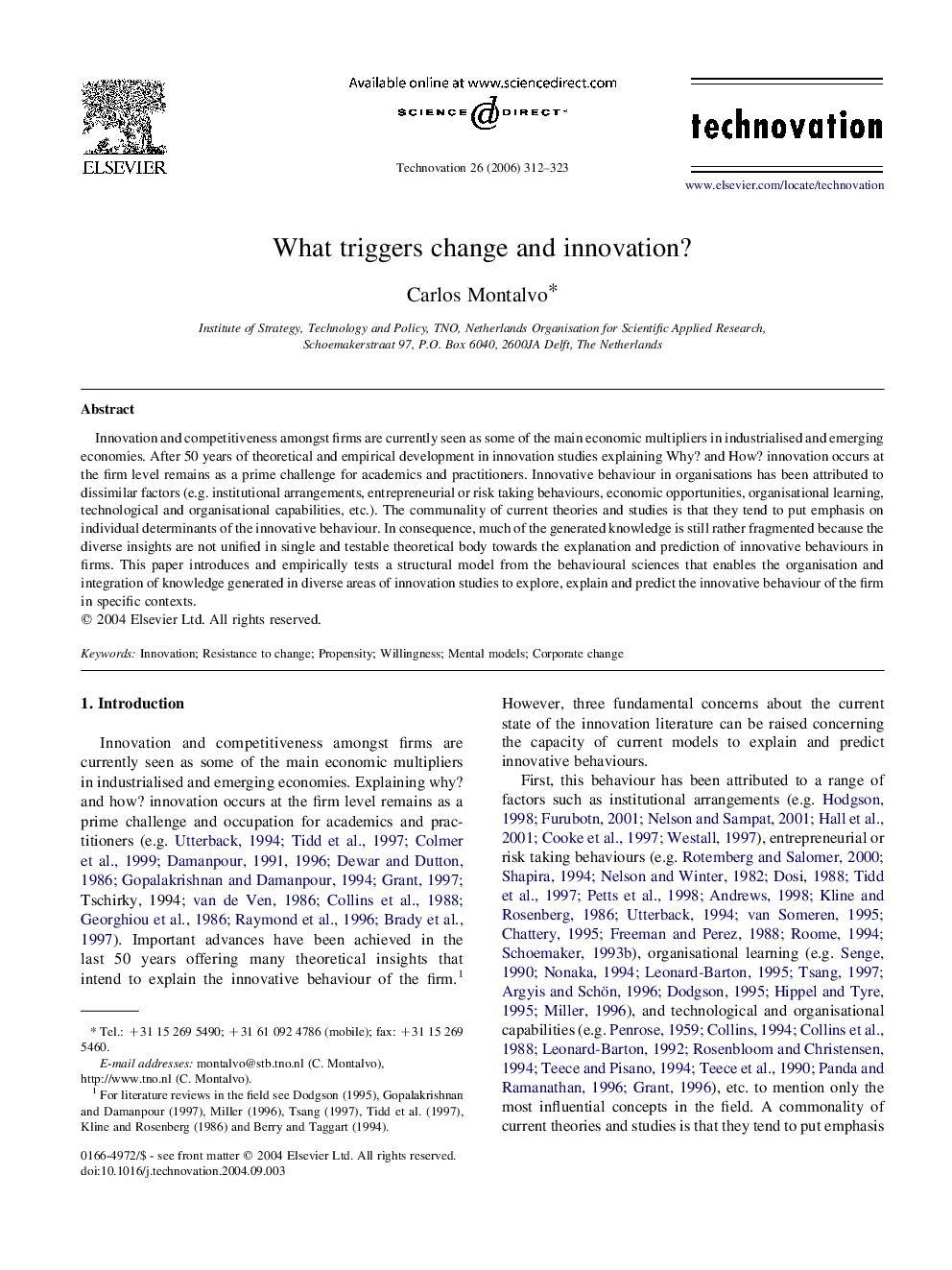| Article ID | Journal | Published Year | Pages | File Type |
|---|---|---|---|---|
| 1022611 | Technovation | 2006 | 12 Pages |
Innovation and competitiveness amongst firms are currently seen as some of the main economic multipliers in industrialised and emerging economies. After 50 years of theoretical and empirical development in innovation studies explaining Why? and How? innovation occurs at the firm level remains as a prime challenge for academics and practitioners. Innovative behaviour in organisations has been attributed to dissimilar factors (e.g. institutional arrangements, entrepreneurial or risk taking behaviours, economic opportunities, organisational learning, technological and organisational capabilities, etc.). The communality of current theories and studies is that they tend to put emphasis on individual determinants of the innovative behaviour. In consequence, much of the generated knowledge is still rather fragmented because the diverse insights are not unified in single and testable theoretical body towards the explanation and prediction of innovative behaviours in firms. This paper introduces and empirically tests a structural model from the behavioural sciences that enables the organisation and integration of knowledge generated in diverse areas of innovation studies to explore, explain and predict the innovative behaviour of the firm in specific contexts.
